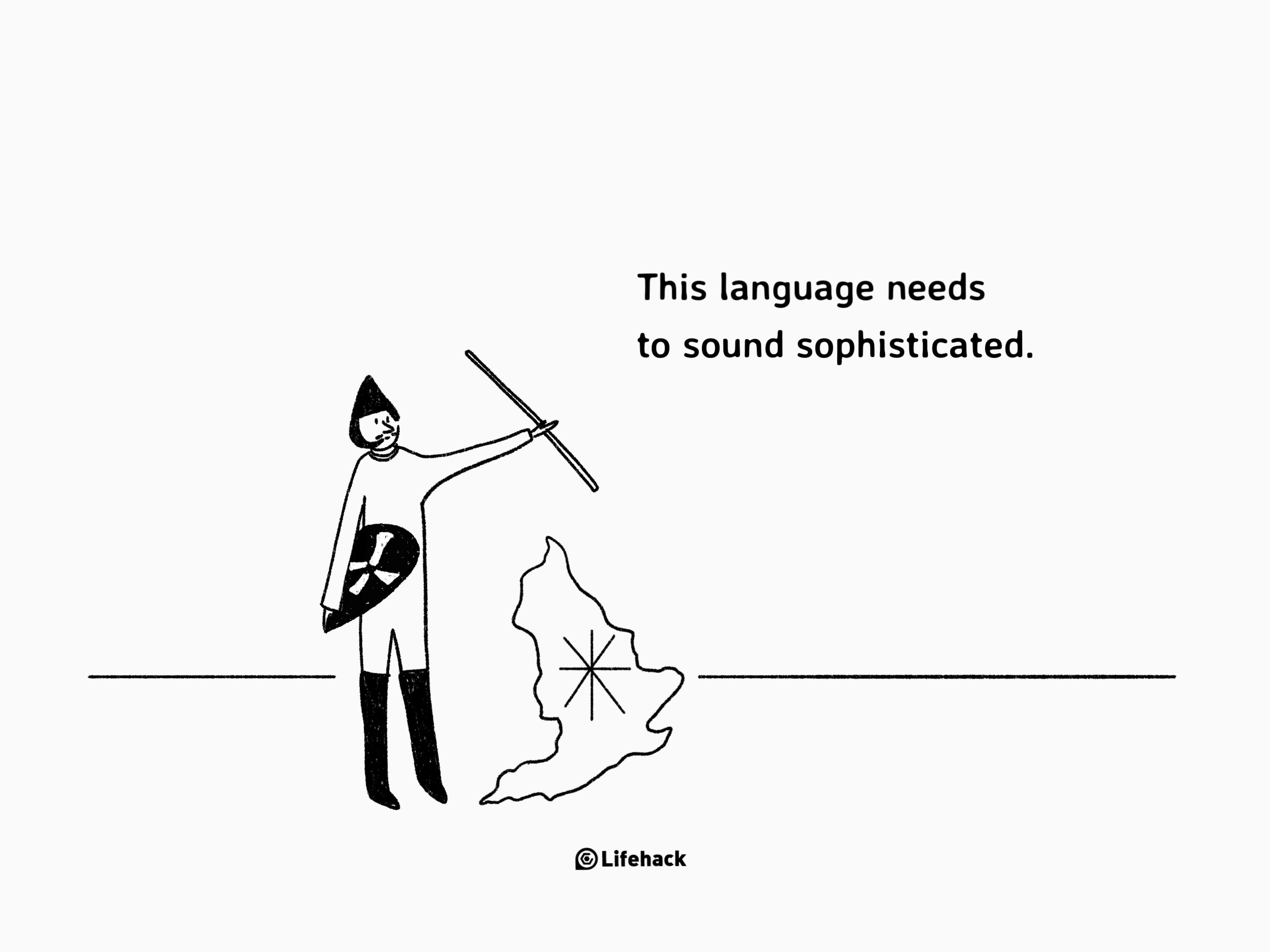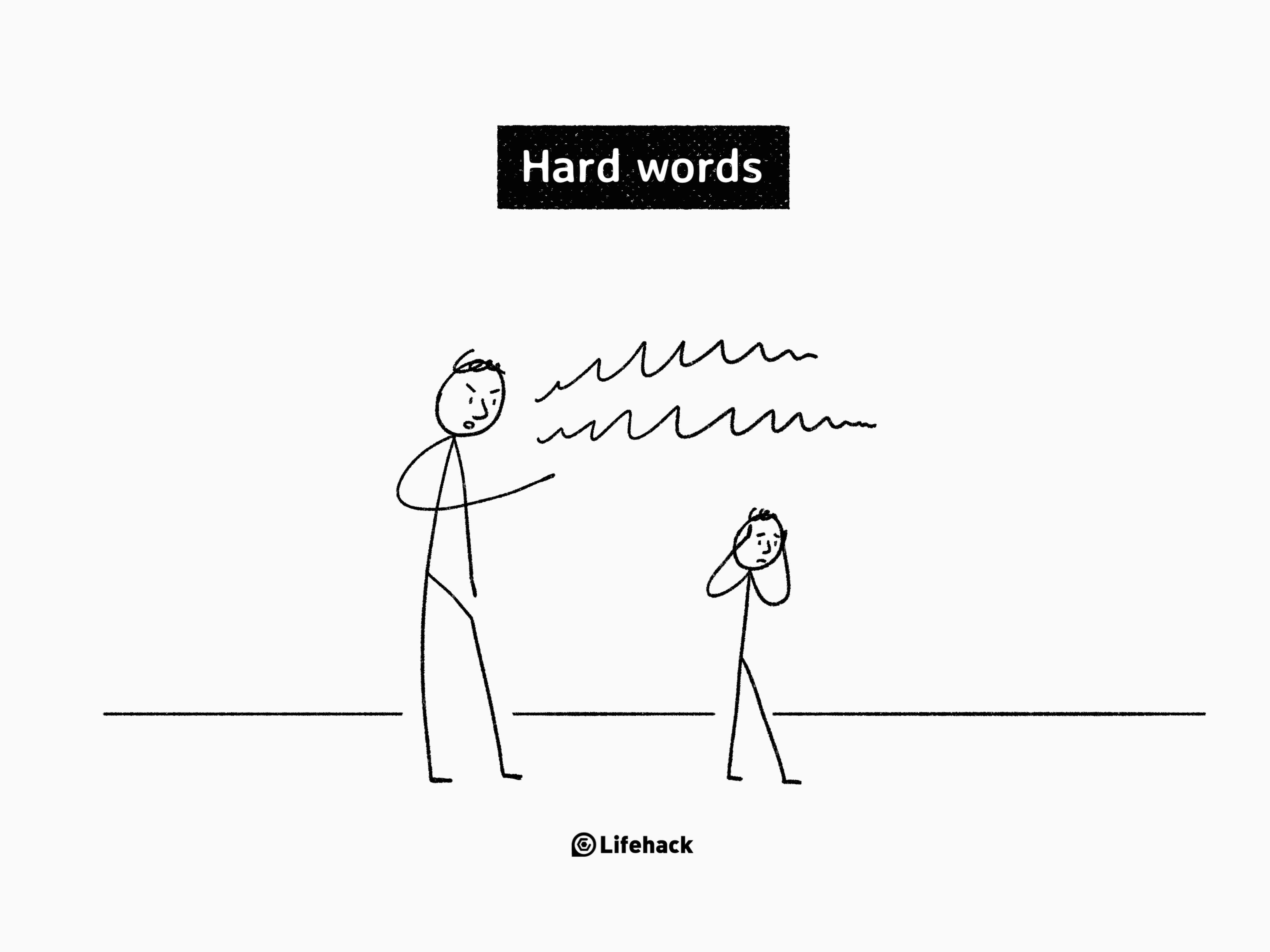The way we use language can help convey context, feelings and emotions. Whether we’re writing or speaking, the words we use have certain ways to put across the ideas and opinions we want to communicate and there are two very distinct types: hard and soft words.
Hard words are short words with fewer letters that deliver a sharp and punchy sound. When we use these types of words, it’s to reflect an element of firmness and decisiveness and a way of getting a point across. Examples of hard words are: simple, correct, hard, accept, or at the same time.
On the other hand, soft words tend to contain more letters and syllables that convey a more gentle sound and reflecting a sense of softness and sophistication. Examples of soft words are: difficult, incomplex, legitimate, acknowledge or simultaneously.
Hard words come from Old English or the Anglo-Saxon heritage. During these times, the English language contained a plethora of functional words such as prepositions and conjunctions, many of which contained short, sharp words of one syllable.
However, after the invasion of England by France in 1066, these Anglo-Saxon stark words become much more softened due to the French language influence. Since the language of the court, government and the upper class was heavily impacted by Norman French, the traditional Old English was infiltrated by the softer and more descriptive words we use today. As time went on, more influence on the English language came from Latin and Greek resulting in the language evolving into a more softened vocabulary and less complex grammar.
Hard words vs Soft Words
There are advantages and disadvantages to the types of words we use, no matter which type.
Hard Words Are Sharp but Blunt
The pros of using hard words are that they’re short, sharp and concise, meaning they submit a punch which is useful for getting important impacting messages across.
However, the con of using hard words is that they tend to sound rigid and emotionless often depicting a harsh command. When it comes to teaching children, parents are more likely to use hard words to show intention of unacceptable behaviour because these are the easiest words for kids to understand and therefore getting them to correct their unwanted behaviour. But the rigidness of these words can encourage children to continue bad behaviour because of the negative feelings conveyed through the use of these types of words.
Soft Words Are Gentle but Vague
Soft words are able to soften hard statements which has the ability to allow people to be more likely to accept and understand them. But the downside to soft words is that they can come across as lengthy and distracting which can make it difficult for others to get the main point of what you’re trying to convey. This ultimately can lessen that punch you need for getting important messages across.
Governments, authorities and big organizations often use soft words in public announcements or press conferences because the use of soft words helps reduce complaints from the public. Soft words are a way of sounding gentle, sophisticated and responsible without offending the general consensus. However, these words can end up being abstract and empty – in other words, they sound good but don’t help to directly address particular problems.
When Words Are Put in the Wrong Place
So what if we were to switch the situations where hard and soft words are used?
If parents were to only use soft words when disciplining their children, the chances are they would still become uncontrollable because they’re too young to behave without rules and use of a stricter tone and language.
Also, if governments and authorities were to only use hard words when dealing with public interactions, yes they’d be getting the facts across clearly but they would pay a price in terms of their audience not accepting harsh truths or offending certain groups within communities.
Hard and Soft Words Together Are The Best Combination
The optimum form of communication and to get your point or message across effectively, is to use both types of words depending on the evolving receptiveness of what you’re saying.
The most effective formula is to generally use more hard words than soft. This helps take the edge off any harsh connotations together with avoiding abstract language which can distract and defer from your main points.
When you need to deliver that punchy message or you need the information to be concise and direct, hard words are your best option. But if you find your message is too blunt, is moving into the direction of negative receptivity or isn’t being understood fully by your audience, it’s time to include softer words.
One of the most successful people of our generation was Steve Jobs. Not only was he a pioneer in transforming his field, he knew how to effectively communicate to an audience using both hard and soft words.
In his speech, Jobs demonstrates his genius use of short but punchy words to tell his story yet interjects a range of softer words to allow an easier and more understanding pace for the audience.
So, use the concept of hard and soft words in your everyday life. Be more mindful and aware of the types of words you use and how effective they are being in getting your point across to others.
A great tool is to write down the most common words you’re using and identify how hard or soft they are. You can then use this to evaluate and change your hard and soft word combinations to become a better communicator and see how people start responding in a more receptive manner.


















































